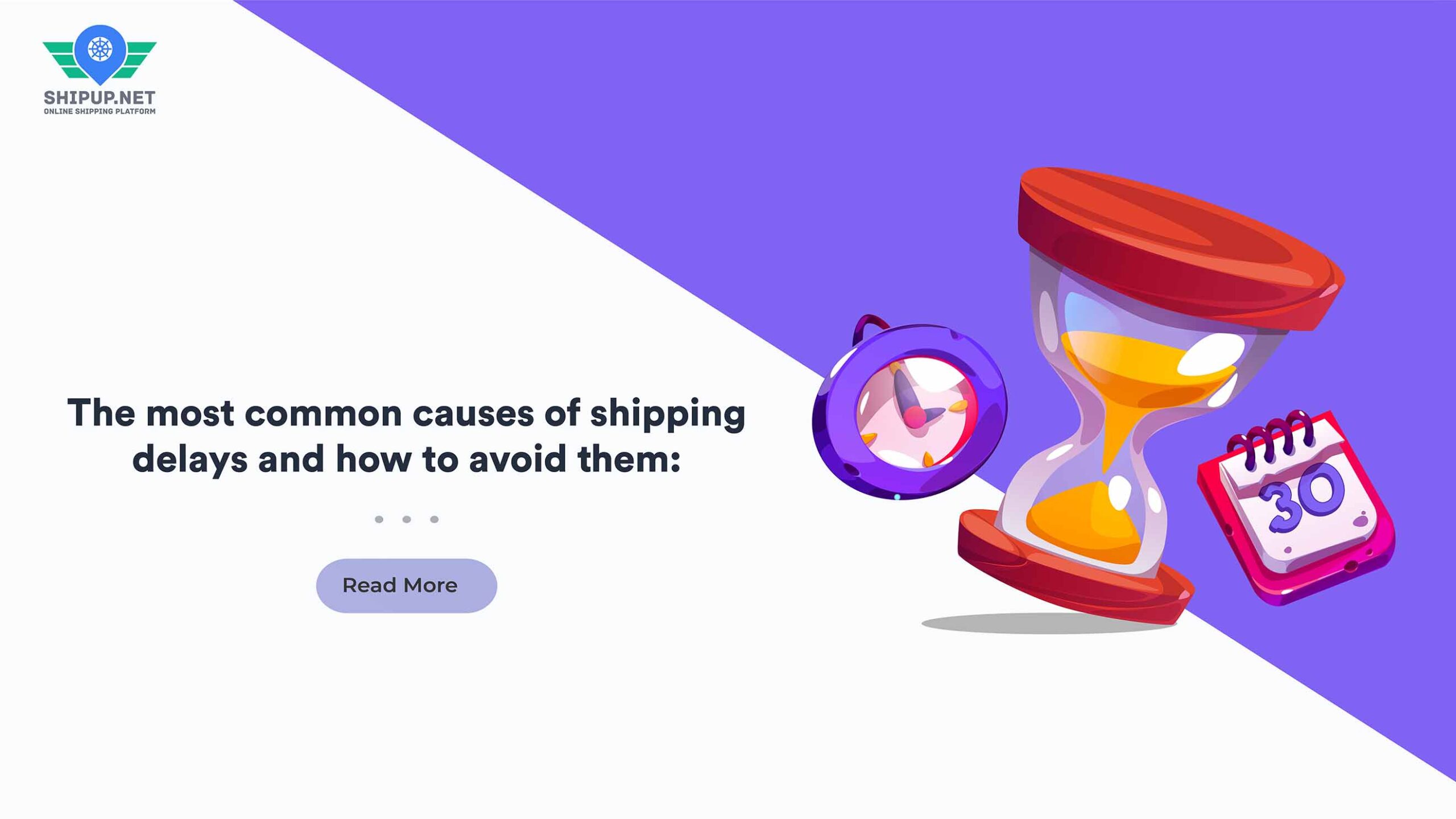Have you ever waited anxiously for a package to arrive, only to be left frustrated when it’s days or even weeks overdue? It’s a feeling we can all relate to – the agony of waiting for our eagerly anticipated delivery, the constant checking of tracking updates, and the disappointment of seeing yet another delay alert. In these cases, you should know about the benefits of using a freight forwarder for your international shipments as they really help you avoid delays.
Timely shipping is crucial for both businesses and consumers, and shipping delays can cause a ripple effect that impacts everything from customer satisfaction to bottom lines. In this blog post, we’ll explore the most common causes of shipping delays and provide tips on how to avoid them. We’ll also introduce you to Visiwise, a platform that can help you stay on top of your shipments and minimize the risk of shipping delays. Let’s get started!
Common Causes of Shipping Delays
Weather-related Delays
Weather-related delays can be a major problem for shippers and other involved parties. Severe weather conditions such as snowstorms, hurricanes, and flooding can disrupt transportation and cause delays. Additionally, temperature-sensitive products may need to be rerouted or delayed due to extreme weather conditions.
To mitigate weather-related delays, shippers or freight forwarders should plan ahead and consider alternative routes or shipping methods. They should also keep their customers informed and provide realistic delivery timelines.
Carrier-related Delays
Carrier-related delays can occur due to a variety of factors, such as mechanical breakdowns, driver shortages, or high demand. Additionally, carriers may experience delays due to border closures or security checks.
To mitigate carrier-related delays, shippers should choose reliable carriers and communicate regularly with them to ensure timely delivery. They should also consider using multiple carriers to avoid relying on a single carrier.
Customs-related delays
Customs-related delays can occur when shipments are held up at customs due to missing or incorrect documentation, inspections, or other regulatory issues. These delays can be especially challenging for international shippers.
To mitigate customs-related delays, shippers should ensure that they have all the necessary documentation and that it’s accurate and complete. They should also work with experienced customs brokers and consider pre-clearance options to expedite the customs process.
Incorrect or Missing Shipping Information
Incorrect or missing shipping information can lead to a multitude of issues in the shipping process. For instance, bad documentation can occur in cases like shipping instructions, export documentation, hazardous cargo documentation, packing documentation, insurance, and more. Such errors can result in delays due to delivery address errors, incorrect product information, or missing contact information for the consignee, causing frustration and wasting valuable time. To avoid such setbacks, shippers must be diligent in their documentation practices. They should double-check all information before shipping and ensure they have accurate and up-to-date customer information. Shippers should also consider using address verification software and maintaining clear and regular communication with their customers to confirm delivery details. This level of attention to detail can prevent costly mistakes and ensure smooth sailing throughout the shipping process.
One of the most common mistakes is missing paperwork. Essential documents such as bills of lading, commercial invoices, and origin certificates are necessary for a shipment to clear customs and make it to its destination. When any of these documents are missing, a lengthy customs inspection is usually required, which can significantly delay the delivery of goods. It is, therefore, important to ensure that all required documentation is available and up-to-date before shipping.
Another critical aspect of proper documentation is accuracy. Errors in details such as HS codes, country of origin, and product specifications can cause clearance delays and even result in the shipment being denied entry. Legible handwriting is also important, as blurry writing can cause delays at various stages of shipping. It is essential to ensure that all documentation is free from any smudges or stains that can render the writing illegible.
Peak Seasons
Peak season refers to the time of year when the shipping industry experiences higher-than-usual volumes of freight. This period is characterized by an increase in demand and a decrease in supply, which can put pressure on the supply chain and logistics network. In the ocean freight industry, peak season typically begins in August with back-to-school shopping and continues until November as businesses prepare for the US holiday season. After a lull in December-early January, Lunar New Year in late January-early February pauses production and exports in some East Asian countries.
During peak season, importers and exporters may experience delays due to the high volume of shipments. The pressure on the supply chain and logistics network means that freight may take longer than usual to reach its destination. As a result, businesses need to be prepared for possible delays during peak season and factor this into their shipping plans. In some cases, peak season surcharges may be applied to help manage the high demand and low supply during this period.
To avoid peak season delays, many importers and exporters choose to break their goods into smaller shipments and ship in advance. This approach helps to spread the workload and reduce the pressure on the supply chain during peak season. By planning ahead and breaking down shipments, businesses can ensure that their goods arrive at their destination on time and minimize the risk of delays.
Port Congestion
Port congestion is a situation where there is an excessive amount of cargo waiting to be processed at a port, causing delays and disruptions in the supply chain. This congestion can occur due to a variety of factors, such as an increase in demand for goods, shortage of port infrastructure or equipment, labor strikes, adverse weather conditions, or unexpected disruptions in the transportation network.
The shipping industry heavily relies on ports for the smooth movement of goods across the world. However, the shortage of manpower, storage, and handling equipment has caused severe congestion in many ports in the US. One of the worst affected ports is Oakland, with an average dwell time of 7 days in Q1 2022. Long Beach, Charleston, and LA are other major ports that are facing congestion, traffic, and vessel delays, making it challenging for businesses to move their goods.
During the Covid-19 pandemic, port congestion became a major problem for the shipping industry. The disruptions in the global supply chain led to a shortage of containers and a surge in demand for transportation services. The port congestion issue was further exacerbated by lockdowns and a reduced workforce, leading to delays and increased costs for shippers. The high demand and limited capacity caused shipping rates to skyrocket, leaving many businesses struggling to manage their logistics costs. However, as the situation is gradually improving, the market is starting to stabilize, and shipping rates are expected to decrease gradually over time.
Port congestion and traffic result in longer than usual waiting times for vessels, leading to significant shipment delays. This delay could result in increased storage costs, higher freight rates, and lost sales opportunities for businesses. To work around this uncertainty, it is essential to include buffer time in your shipment plan and send your shipment to less-clogged ports.
It’s also crucial to stay up-to-date with the latest information and trends in the shipping industry. Businesses need to be prepared to adapt and adjust their supply chain strategies to mitigate the risks caused by port congestion and traffic. By keeping an eye on industry trends and planning ahead, businesses can better navigate the uncertainties that come with shipping goods through congested ports, ensuring the smooth movement of goods and timely delivery to customers.
Global Events
Global events have a significant impact on international shipping. One of the recent examples is the COVID-19 pandemic, which caused a scarcity of manpower and equipment in many countries, leading to congestion in ports and vessel delays. As the industry is still recovering from the pandemic aftermath, a sudden surge in demand has further exacerbated the situation. Factory-to-door delivery times nearly doubled on major Asian to US lanes in 2021 due to COVID-19 restrictions, leading to longer transit times. Although the average transit times from China-US have steadily decreased since the start of 2022, backlog and congestion still remain major reasons causing shipment delays.
Another example is the Suez Canal Blockade that occurred in March 2021 when a massive container ship called the Ever Given blocked the Suez Canal for six days. The incident caused major shipment delays and congestion on the Asia-Europe lane, with 369 other vessels queuing up to pass the canal on both sides. The entire fiasco resulted in a loss of $9.6 billion worth of goods per day, showing the catastrophic effects such unexpected events can have on the supply chain network and the shipping industry as a whole.
The war in Ukraine also had a significant impact on international shipping. It led to the closing of important ports in Russia and halting of operations in the Black Sea, severely affecting the import and export of major commodities. As a result, the shipping industry faced a lot of challenges due to the sudden disruption in the supply chain network. These examples demonstrate how global events can have a cascading effect on international shipping, leading to delays, congestion, and losses.
Consumer Behaviors
The global shipping industry is closely linked to consumer habits. Any sudden changes in global consumer preferences can have an immediate impact on the industry. In the past two years, online shopping and eCommerce have gained popularity worldwide. This has resulted in a surge in cross-border demand for products, which the shipping industry has struggled to keep up with.
The sudden increase in cross-border demand has led to delays in the delivery of goods and vessel delays across the supply chain globally. The production of vessels and infrastructure development could not keep pace with the sudden increase in demand. As a result, many businesses have faced shipping delays, which have impacted their operations and revenue.
According to reports, 42% of online shoppers have abandoned their carts due to long delivery times. This indicates that delivery time is a critical factor for consumers when making purchasing decisions. As consumer habits continue to evolve, it is important for the shipping industry to keep pace with changing demands and invest in new technologies and infrastructure to meet the needs of global consumers.
Trucking Problems
The shortage of truck loading capacity and equipment is a significant challenge in logistics, causing major delays in deliveries. Shippers and forwarders face immense difficulty in transporting their cargo, as the supply of chassis, the load-bearing equipment used by trucks, is very low. This aggravates the already existing trucking delays, resulting in late shipments and increased costs.
The chassis shortage is a complex issue with multiple factors contributing to the problem. One of the primary reasons for the low supply of chassis is the significant increase in demand for shipping. As a result, there is a high volume of imports that require transportation from the port to the warehouse or the final destination, leading to a shortage of trucks and chassis. The supply chain disruptions caused by the COVID-19 pandemic have further worsened the situation, resulting in a significant decrease in the production of chassis and trucking equipment.
Lack of Visibility
Lack of visibility in the shipping process is one of the major causes of delays. Without the ability to track the location of packages and anticipate any issues, it becomes difficult for logistics providers to provide an accurate delivery estimate and for customers to make informed decisions. This lack of visibility can lead to a host of issues, such as delayed deliveries, and missed delivery deadlines.
Fortunately, there is a solution to this problem. Visiwise is a Shipment Visibility Platform that offers real-time tracking updates and notifications to shippers and customers. With Visiwise, you can offer your customers an all-in-one shipment tracking experience that is customizable and easy to use.
Best Practices for Communicating Shipping Delays to Customers
Shipping delays can be frustrating for customers, but as a marketer, sales representative, or member of the customer support team, you can turn these situations into opportunities to build trust and improve customer retention rates. The first and most important best practice is to be apologetic. You cannot control every aspect of shipping, but you can express sympathy and understanding for the customer’s inconvenience. A sincere apology can go a long way in demonstrating your commitment to customer satisfaction.
Transparency is also crucial when communicating about shipping delays. Customers appreciate knowing the cause of the delay and what steps you are taking to address it. When offering solutions to customers, provide options that allow them to have some control over the situation. For example, you could offer expedited shipping at no extra charge, provide a discount on a future order, or allow customers to cancel their order if they prefer.
During shipping delays, it is important to over-communicate with customers. Let them know that you have not forgotten about them or their package and provide regular updates on the status of their order. Working together as a team to mitigate delays is also essential. This can involve collaborating with your logistics partners, adjusting shipping schedules, and finding creative solutions to get products to customers as quickly as possible.
In conclusion, with the right communication tools and strategies, shipping delays can be effectively managed to minimize the impact on customer satisfaction. Following these best practices and maintaining a personable and empathetic approach can turn shipping delays into opportunities to build strong, long-lasting customer relations
Visiwise and Managing Shipping Delays
Shipping delays can be a major headache for businesses and their customers alike. Fortunately, with the right tools and technology, it’s possible to address and mitigate delays as they happen. That’s where Visiwise comes in. As an innovative platform for shipment tracking and management, Visiwise offers a range of features designed to help businesses stay on top of their shipments and minimize the side effects of shipment delays. Also, you can see the ETA change history and check the performance of each carrier. Visiwise provides you with KPIs on shipping lines’ performance, making it easier for you to choose your favorite shipping lines.
Real-time tracking and alerts
One of the key ways that Visiwise helps businesses address shipping delays is through its real-time tracking and alerts system. With Visiwise, businesses can track their shipments from start to finish, receiving updates and notifications in real time. This allows them to quickly identify any delays or issues that arise and take action to address them.
For example, if a shipment is delayed due to weather conditions, Visiwise’s tracking system will alert the business by email and provide an estimated delivery time based on the latest information available. This means that the business can notify its customers of the delay and set expectations accordingly, which can help reduce frustration and disappointment. The only thing you need is their Email addresses, and your customer and any party who is involved with the shipment gets customized email notifications on every update that needs their attention.
Communication and collaboration tools
In addition to its real-time tracking and alerts system, Visiwise also offers a range of communication and collaboration tools that help businesses stay on top of their shipments. We call it Visiwise Workspace, which allows businesses to communicate directly with carriers, customers, and other stakeholders involved in the shipping process.
For example, suppose a Shipment is delayed due to carrier-related issues. In that case, the business uses these tools to keep their customers informed about the status of their shipments and any delays that may occur.
ETA History
Finally, Visiwise’s reporting features can help businesses identify the best carriers out of the ones they work with. With these features, businesses can track the ETA history or, in other words, the carrier performance and use this information to understand which shipping company has fewer ETA changes.
Overall, Visiwise is a powerful tool for businesses looking to manage shipping delays and provide their customers with a better experience. With its real-time tracking and alerts, communication and collaboration tools, businesses can stay on top of their shipments and address delays as they happen.


